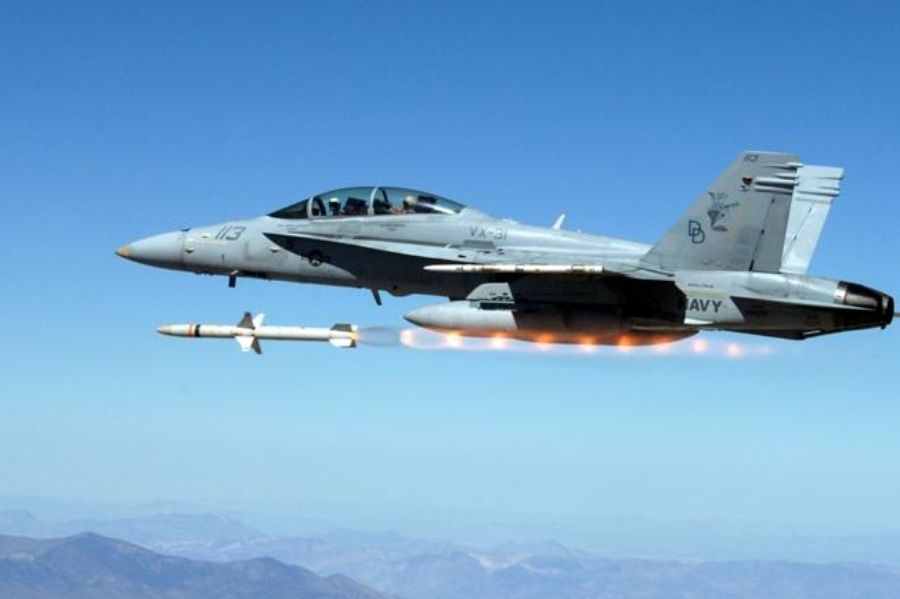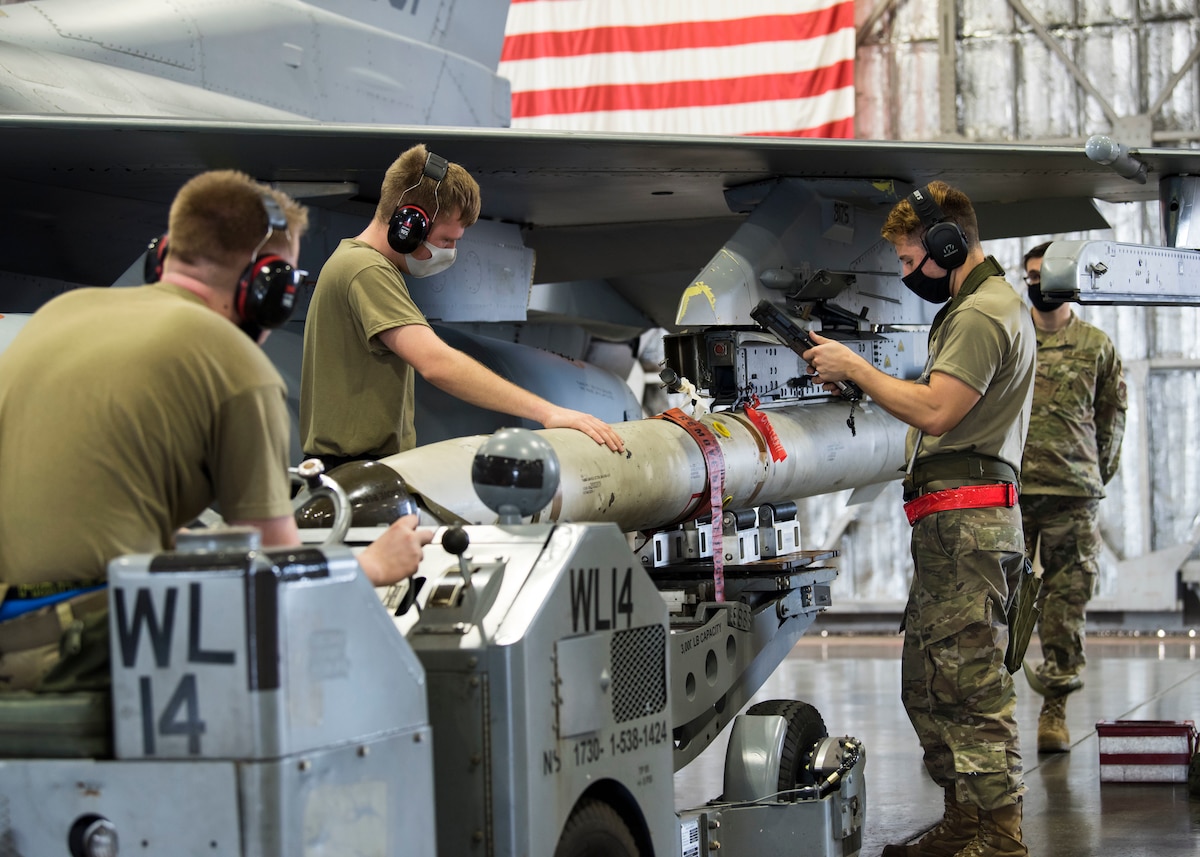The US State Department has approved a possible sale of an array of powerful missiles requested by Australia for an estimated $94 million.
Mid-Air Miracle! In A Path Breaking Move, US Plans To Wirelessly Refuel Its Next-Gen UAVs With Laser Beams
“The State Department has decided to approve a possible Foreign Military Sale to the Government of Australia of AGM-88E2 AARGM E2 Missiles and related equipment for an estimated cost of $94 million,” said the Defense Security Cooperation Agency (DSCA) in a press release.
Australia requested to buy up to 15 guidance and 15 controls sections of the AGM-88E2 Advanced Anti-Radiation Guided Missile (AARGM); up to 15 Rocket Motors, 15 Warheads, and 15 Controls of the High-Speed Anti Radiation Missiles (HARM).
Additionally, the list includes AGM-88E2 AARGM All Up Round (AUR) tactical missiles and AGM-88E2 AARGM Captive Air Training Missile (CATM), the HARM G-Code AUR and HARM G-Code CATM; M-Code GPS receivers; containers; support and test equipment; EA-18G Growler test support; spare and repair parts; software (Classified and Unclassified).

The primary role of these missiles is to seek and destroy the enemy’s radar-equipped air defense systems.
Turkey Eyes ‘More Advanced’ Eurofighter Typhoons As US Dithers On F-16s & TF-X Remains Under Development
“The proposed sale will improve Australia’s capability to meet current and future threats by suppressing and destroying land or sea-based radar emitters associated with enemy air defenses. Destruction or suppression of enemy radar denies the adversary the use of air defense systems, thereby improving the survivability of its tactical aircraft,” said the DSCA press release.
The principal contractor for this sale will be Northrop Grumman Information Systems (NGIS).
These missiles are employed with the US Navy and Marine Corps on their F/A-18s, its electronic warfare variant, the EA-18G Growler aircraft, and the Italian Air Force’s Tornado Electronic Combat aircraft.
The US Air Force (USAF) also uses the AGM-88 HARM missile via its specialized F-16s equipped with the HARM Targeting System (HTS). These HTS pods are used only by the USAF, enabling the F-16s to detect and automatically target radar systems with HARMs rather than relying entirely on the missile’s sensors alone.
The AGM-88 HARM
Texas Instruments initially developed the AGM-88 HARM as a replacement for the AGM-45 Shrike and AGM-78 Standard ARM system. Raytheon Corporation took over its production after acquiring Texas Instruments’ defense production business.
The HARM missile gets the target parameters from the launch aircraft before it is launched, which the rocket uses together with the relevant altitude data to process incoming Radio Frequency (RF) energy for target acquisition and guidance.

The terminal homing capability of the HARM missile provides the launch aircraft with the launch and leave capability.
The missile is said to be capable of singling out the desired target from several radio frequency emitters. It has a proportional guidance system in its nose section, consisting of a fixed antenna and seeker homes on enemy radar emissions.
There are three variants of the missile, the AGM-88A, B, and C, of which the warhead sections of variants A and B contain 25,000 pre-formed steel fragments, an explosive charge, a fuze, and a fuze booster. The warhead section of the variant C contains 12,845 tungsten fragments and an improved explosive charge which provides greater overall lethality.
These warhead sections damage the target’s antenna and waveguide system to render it inoperative. The missile is propelled by a smokeless, solid-propellant, dual-thrust rocket motor.
The AGM-88E2 AARGM
The AGM-88E2 AARGM is an upgrade over the legacy HARM missile system that incorporates a new guidance section and modified control section in addition to the HARM’s Rocket Motor, warhead section, wings, and fins.
It is equipped with an advanced multi-sensor system consisting of a Millimetre Wave (MMW) terminal seeker, an advanced Anti-Radiation Homing (ARH) receiver, and a Global Positioning System / Inertial Navigation System (GPS/INS).

The missile has a fire-and-forget capability that enables weapon engagement at sufficient stand-off ranges. It also has the Weapon Impact Assessment (WIA) subsystem, which transfers impact assessment data before the impact to support battle damage assessment decisions.
The AGM-88 HARM and AGM-88E2 AARGM have more or less similar dimensions, and both the missiles have Mach 2+ speeds but vary significantly in their range. The HARM missile has a range of 48+ km, whereas the AARGM has a range of 111+ km.
Chinese A2/AD Challenge In The Indo-Pacific
The US and its allies in the Indo-Pacific face a significant challenge from the Anti-Access/Area Denial (A2/AD) threat posed by China.
According to experts, air defense is central to China’s A2/AD posture. Therefore over the years, the Chinese military has acquired an array of Surface-to-Air Missile (SAM) systems to shoot down the US and other friendly aircraft.

For the US to establish control of the skies and ensure freedom of maneuverability for friendly air forces in a potential future war with China, the capability to destroy the Chinese air defense systems is paramount.
These US capabilities, according to experts, are bolstered by the aircraft of regional US allies that can undertake Suppression of Enemy Air Defense (SEAD) missions.
The Royal Australian Air Force (RAAF) has a dedicated Electronic Warfare unit equipped with the EA-18G that can deploy the AGM-88E and -88E2, which could work closely with their counterparts in the US Navy or Marine Corps during a crisis in the Indo-Pacific.
- Contact the author at tanmaykadam700@gmail.com
- Follow EurAsian Times on Google News




